T. William Porter and eight other Houston corporate lawyers quit their respective law firms in 1981 to create a startup as an alternative to the mega-firms.
In May, Porter Hedges celebrated 35 years of operation and extraordinary success.
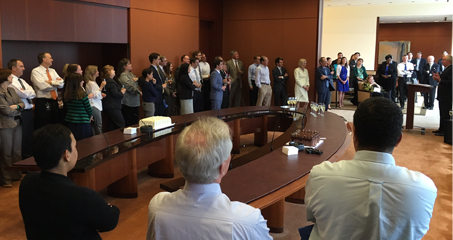
The firm now has 110 lawyers, $71.5 million in revenues and an enviable list of premium clients, including American Energy Partners, KBR and Noble Energy. Eighteen months ago, it opened its first satellite office, which is in Oklahoma City.
Porter Hedges has earned another unofficial designation: the most sought after corporate law firm in the U.S.
Numerous regional, national and global law firms desperate to open an office in Houston have approached Porter Hedges about potential mergers during the past five years.
“Porter Hedges is like the prettiest girl at the dance – she’s there without a date and she can have anyone she wants at the ball,” Ward Bower, a law firm consultant at Altman Weil, said in an interview last year. “Every law firm wanting to open in Houston covets the lawyers and clients at Porter Hedges.”
Dozens of law firms seeking to enter the Texas legal market or expand their presence in the energy sector have contacted Porter Hedges about a possible merger during the past few years.
Lawyers who go through such merger discussions call it “the dance,” because one firm is usually courting another. They take each other out for expensive dinners, exchange firm financials, discuss future plans and then decide whether to propose.
“They call us, we talk to them and we do the dance,” says Porter Hedges managing partner Rob Reedy, who adds their discussions have never gotten as far as trading firm financials. “We enjoy practicing law together. We have a wonderful firm culture. We have no intention of losing that.”

Reedy and others at Porter Hedges say the firm’s 35-year journey has hit numerous highs and some scary lows, including a few days two decades ago when the firm’s partners considered closing the doors.
The firm was originally named Porter & Clements. Its first offices were at the Old Sheraton Hotel at 711 Polk, which were less than impressive. Condensation from the hotel’s overworked air conditioner window units dripped into lawyer offices.
“We had to put out pots at night to catch the water from the overflow pans,” says employment law partner Joanne Vorpahl.
In 1983, Hurricane Alicia smashed out the firm’s windows and sucked out all copies of state and federal tax codes from the law library.
That same year, Porter & Clements recruited and made offers to five new law school graduates. All five accepted. All five were women.
“It was so much fun because everyone at the firm was young,” says Vorpahl, who graduated from the University of Houston Law Center in 1983 and was the 18th lawyer to join the firm. “Bill was the oldest and he was in his 40s. I stayed here because of the people. We only hire lawyers we like.
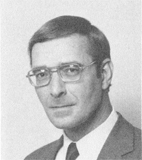
“There was not much employment litigation in Houston until the Clarence Thomas/Anita Hill hearings, and then employment law exploded,” she says.
Porter scored a major coup in 1985 when it lured Dan Hedges, the sitting U.S. Attorney for the Southern District of Texas, to join the firm instead of returning to his old firm, Fulbright & Jaworski.
“Getting Dan was huge,” says Porter, who is now 74. “It showed we could compete with the big three firms for talent.”
By 1993, the firm had grown to 50 lawyers and established itself as one of the go-to firms in the legal industry’s middle market in Houston. The firm had gained two huge clients – Baker Hughes and Cameron Iron Works, which was a subsidiary of Cooper Industries.
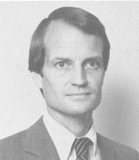
“Things were going great and then, all of a sudden, crisis hit. And overnight we faced the biggest challenge to our firm’s survival,” Porter says.
Nineteen lawyers in the firm’s litigation section, led by co-founder Eugene Clements, announced they planned to leave to form their own shop. The departing partners also asked if they could remain in their offices and simply sublease the space.
“Many of these guys just wanted to make the biggest and fastest buck they could,” Porter says. “I told them that [if I had] just gotten divorced, I would be damned if I would live under the same roof as my ex-wife and I will not do so with them.”
Reedy and others say it was a scary time at the firm. It showed just how fragile law firms are because their primary assets – lawyers with books of business – walk out the door every day and may never come back.
That Saturday, the partners met at Porter’s house to decide the future of the firm.
“There were a lot of raw nerves,” Reedy says. “It really could have gone either way. Many of us questioned whether we would get paid if we stayed.”
One option presented that day was an offer from a larger firm to merge, Hedges says.
“We could have just disbanded,” Hedges says. “I must be honest that I was preparing myself to leave. In the end, we decided we could rebuild.”
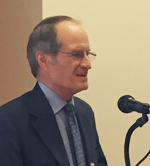
The remaining partners, led by Porter and Hedges, voted to stay. The firm was immediately renamed Porter Hedges.
“A week after the litigators moved out, we went to a two-firm beauty contest for a major drilling contractor against Vinson & Elkins and we won,” Porter says. “It was a huge boost – financially and morally – for the firm.”
Porter Hedges has grown slowly but steadily during the past 23 years. The firm’s lawyers have led some major transactions.
In the mid-1990s, the firm represented Arizona-based Allied Waste Industries in a $1.5 billion acquisition of assets. Two years later, in 1998, the U.S. Department of Energy hired Porter Hedges to advise it in its divestiture of $3.65 billion in oilfield assets in California.
Reedy and others say Porter Hedges received another boost thanks to the Great Recession of 2008, as many oil and gas companies turned to mid-sized law firms with lower hourly rates than the large mega-firms.
The hourly rates of Porter Hedges lawyers average about 25 percent less than their large competitors, according to lawyers. For example, revenues per lawyer at Porter Hedges in 2015 was $677,000, which compares to more than $1 million at Akin Gump, Baker Botts or V&E.
“Bill Porter used to say that if you need a heart transplant, you would go to a specialist and pay a lot, but there’s a lot of good paying bunion work out there to be done and I like working on bunions,” says Jim Jordan, a former Porter Hedges partner who is now director of legal operations at Macquarie Bank in Houston.
“Porter Hedges figured out that there are a lot of middle-market and upper-middle-market M&A deals that need to be done and that businesses don’t want to pay $1,000 [an hour] to the elite firms to get those deals done,” Jordan says. “Then, many times, the firm does such good work on those middle market deals that the client hires them to do the mega-deals, too.”
As a result, Porter Hedges represented Petrohawk Energy, Noble Energy and Azure Midstream in billion-dollar transactions during the past four years.
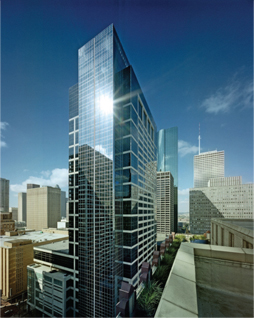
At the end of the day, Porter Hedges thrives in the upper-middle-market. For example, it is currently representing Colorado-based Vantage Energy in a $339 million acquisition of assets from Alpha Natural Resources.
The firm scored another coup when KBR hired Vorpahl and Hedges to defend the Houston-based construction and engineering company against allegations brought by a former KBR employee, who claimed she had been drugged and raped in 2005 by several KBR firefighters while working in Iraq.
The plaintiff, Jamie Leigh Jones, also accused KBR of condoning a hostile work environment and fraud. She sought about $150 million in damages. The case attracted global media attention, including segments on 60 Minutes and front-page articles in the New York Times and the Wall Street Journal.
Jones v. KBR went to trial in 2011. A Houston jury heard four weeks of extraordinary testimony. During closing arguments, Vorpahl told jurors to “reject that fiction” told by Jones and follow the evidence.
“I know it might make a better manuscript or a book or a play or a movie to tell the story that Jamie Jones was gang-raped and locked in a shipping container,” Vorpahl argued. “But I am asking you to reject that fiction and do justice in this case.”
The jury did just that, ruling for KBR. In fact, the judge in the case ordered Jones to pay KBR $145,000 in legal fees.
At age 74, Porter says he’s proud of the firm’s achievements large and small. He’s fully retired, though he maintains an office at the firm and visits every couple weeks.
“This law firm has basically been my life’s work,” he says. “We are not the biggest firm, and we don’t charge the highest rates and our lawyers don’t make the most money, but we have set a standard for excellence. For me, that’s what I wanted to accomplish 35 years ago.”
